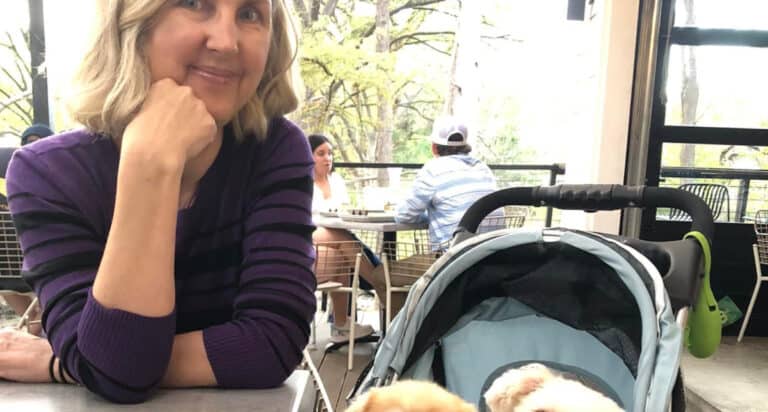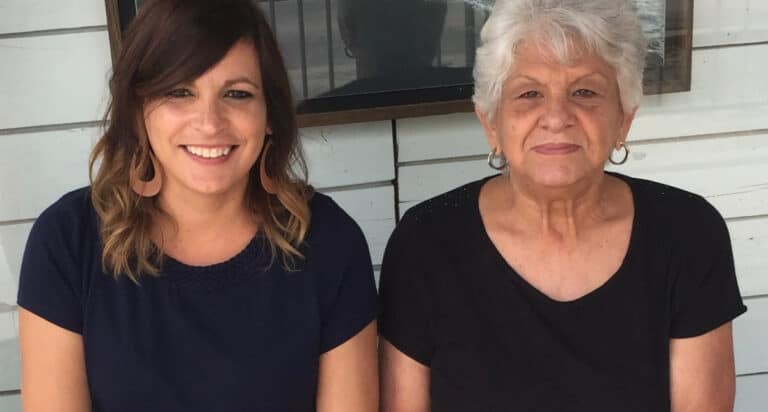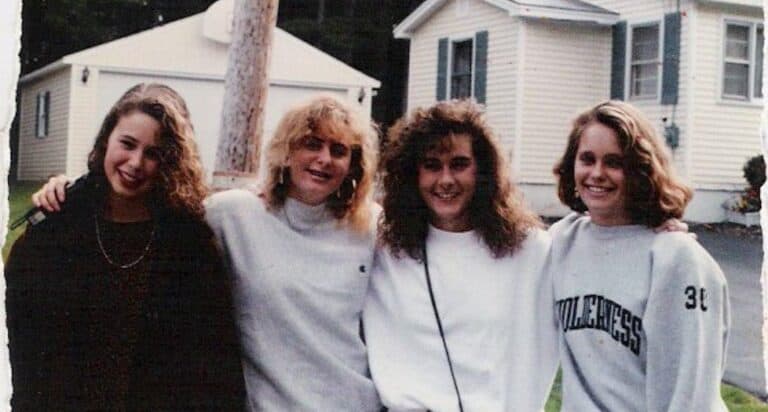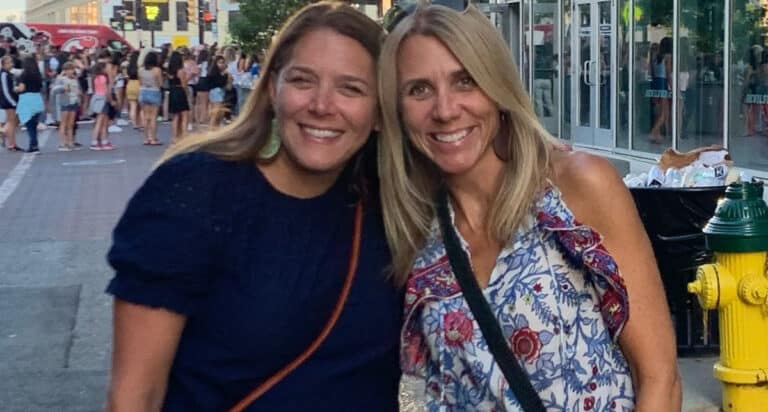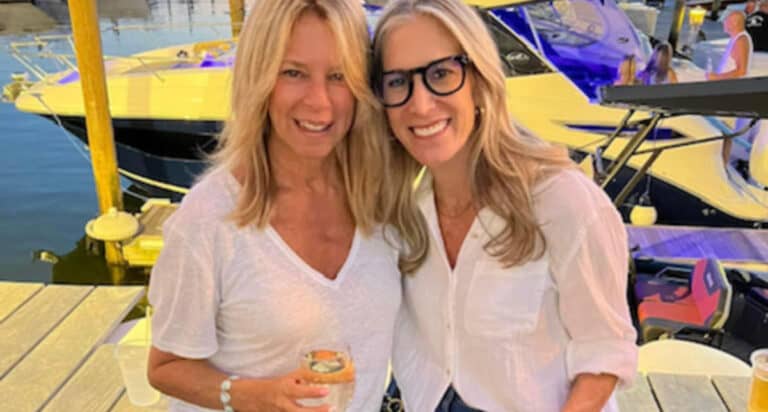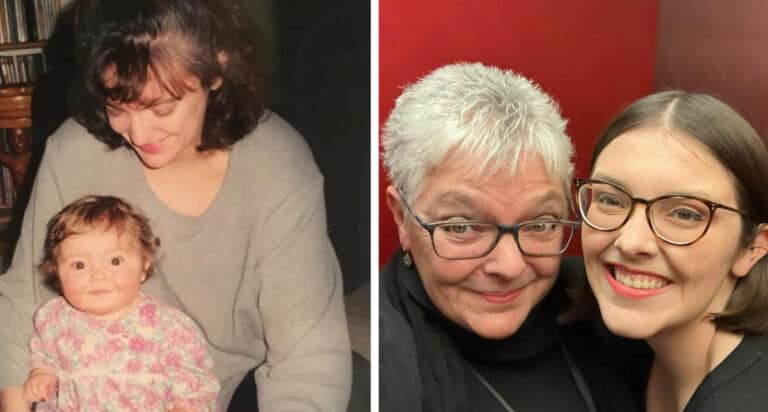“Who will have the ‘be gentle on us’ talk with the other team tonight?”
That’s a typical conversation starter among us, the Older Wiser Lacrosse Ladies (OWLLs), as we huddle on the sidelines, bursting with anticipation for game time. It’s our team’s second season with the Boston Ski and Sports Club (BSSC) women’s outdoor lacrosse league that plays Tuesday nights throughout the fall.
Our team name is questionable.
We are an older group of women playing lacrosse
We’re definitely older. The average age of our team is about 48, compared to an apparent average of 25, at most, for every other team. We’re generally “lacrosse ladies.” Most of us played in high school, some in college. Some have never played before but played other team sports, and many of us now coach our kids.
Wiser? Not sure. Who in their right mind (and right knee-braced, double-bra’d, extra-protection under-garmented body) would show up at 9 pm on a Tuesday in the chilly New England fall to get their butts kicked by team after team of young women hot off the college fields who could, for many of us, be our daughters?

We do this because we love the game and team sports
The answer is simple: those driven by a love of the game and the irreplaceable value of team sports. While our experience is a far cry from our glory days of sports, if we ever had them at all, the value of the experience translates. Every week, we get what we came for (and a few extra bruises to boot).
It’s our second season in all respects, and we’re in it to…be in it.
We may never win a game, but we’ve improved immensely from our debut’s 1-24 tally. Improvement is why we show up. This is our chance to take what we say as coaches, parents, teachers, or bosses and put it into practice for ourselves. Our chance to build trust in ourselves and others in the heat of action. Our chance to laugh. A lot.
There is nothing like playing on a team
Why lacrosse? After all, tennis and pickleball can satisfy a competitive drive, and fitness can be more comfortably achieved through lap-swim, running, yoga, and Pilates. These are all great things, most of which we also do. But there’s nothing like playing on a team with interdependence, wins and losses (okay, all losses in this case), and a collective drive for improvement.
Women’s lacrosse, with its emphasis on speed, agility, and hand-eye coordination, is a beautiful game. Watching the younger generation do it elegantly and effortlessly is a marvel. For us, even one successful play, sprint, pivot, catch, or maybe even the sound of the ball swishing against the back of the net provides an unmatchable thrill that makes every leg cramp and bout of hyperventilation worth it. We are testing our limits in a new-again way.
There is a lack of infrastructure to support a lifetime team sport journey for women
So why are we OWLLs alone out there in our age group?
Maybe we’re a small pool to begin with — lacrosse is far more popular now than it was in the ‘80s and ‘90s when we were playing. More likely, there is simply a lack of infrastructure to support a lifetime team sport journey, especially for women. While pick-up team play in sports like soccer or basketball seemingly thrives nationwide, particularly for men’s games, there’s still a void. “Escapes” for middle-aged women aren’t team field sports.
The void is not only about gender. The context of early team sports, in the first place, could be a driver: youth sports are often seen as feeders into a school sports setting, making the team experience finite. Whether it’s about gearing up to make varsity in high school or to play in college via varsity, club, or intramural platforms, schools are the setting. As most athletes are not bound for professional leagues, when school ends, so do most team sports opportunities.
There are ways to support an enduring team-based community
There’s undoubtedly an opportunity for far more pathways to team sport longevity. Organizations like BSSC throughout the country showcase possibility. European models of village-based sports clubs that last from the teenage years through senior adulthood provide interesting examples of infrastructure supporting the possibility of an enduring team-based community.
Maybe we can be a source of inspiration — to our young opponents to keep playing even when life seems unimaginably busy; to our kids to look beyond a win for joy in a team experience; and to our peers who we hope will come out in droves after reading this (we could use a few more subs).
We always ask our opponents to be gentle with us. Generally, they are. In return, by providing a path for continuation, we can be gentle on this next generation of emerging adult athletes, many of whom had that finite window of school-based team sports wiped out by the pandemic. Despite growing imperfection and age, we can all have a second season.
More Great Posts:

